New Jersey Butterfly Club
A chapter of the North American Butterfly Association (NABA)
Falcate Orangetip
Anthocharis midea
Identification: Small—1.5” (noticeably smaller than Cabbage White). Above: Male is white with orange patch on outer forewing that is visible in flight. Female lacks the orange patch and has bolder checkered fringes along the FW margins. Below: Both sexes show fine black marbling on the HW, and distinctly hooked FW.
NJ Status and Distribution: Resident. Uncommon and local throughout.

Habitat: Open areas (including hayfields with Tower Mustard), woodland edges and openings.
Flight Period: One brood from early April to mid-June (see comments). Extreme dates: North Jersey 3/26—6/17; South Jersey 3/20—6/9.
Caterpillar Food Plants: Several species in the genus Arabis.
Overwintering Stage: Pupa.
Good Locations: Assunpink WMA, Mountainside Park, Flatbrookville, Jenny Jump SF (Summit Trail), Wheelabrator WR (Westville), Beaver Swamp WMA (South Dennis), Glassboro WMA, Julian L. Capik Nature Preserve, Deep Run Preserve, Mercer Co. Park, AT Lands/Canal Road.
Comments: Orangetips emerging in April appear to lay eggs exclusively on woodland rockcresses (primarily Arabis laevigata and A. lyrata), whereas those emerging in May lay eggs on Tower Rockcress (A. glabra), which grows in open habitats.
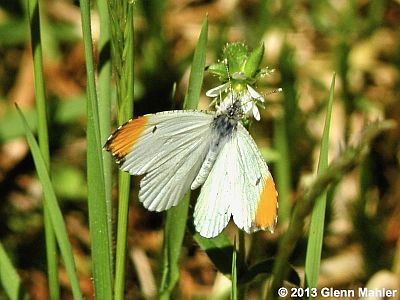
Male, Flatbrookville, Sussex Co., NJ, 5/16/10.
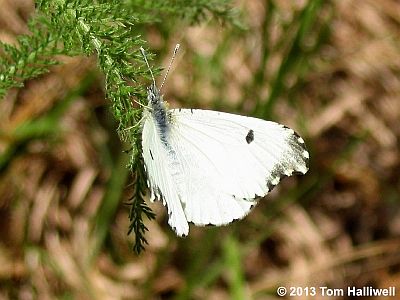
Female, Flatbrookville, Sussex Co., NJ, 5/28/05.
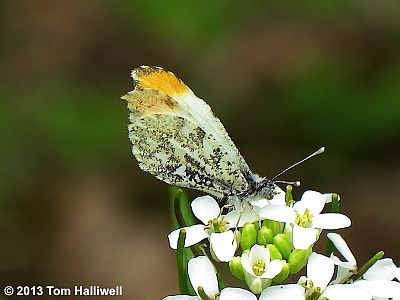
Male, Kittatinny Valley SP, Sussex Co., NJ, 5/3/06, on Lyrate Rock Cress.
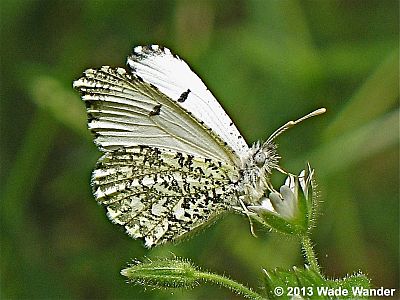
Female, Flatbrookville, Sussex Co.,NJ, 5/20/07, on Common Mouse-ear Chickweed.
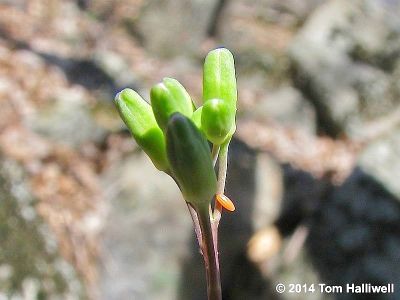
Egg on Smooth Rockcress.
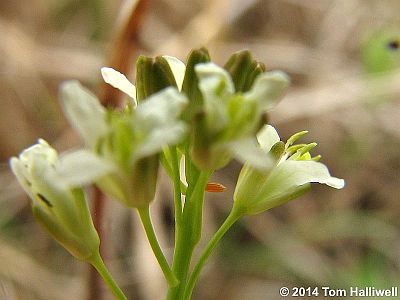
Egg on Tower Rockcress.

Mid instar caterpillar on Tower Rockcress.

Pupa on Tower Rockcress.
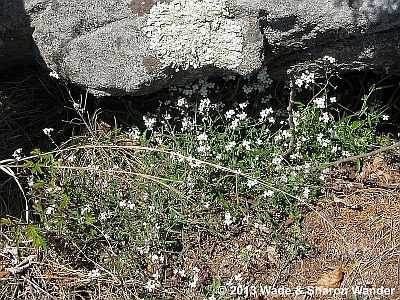
Lyrate Rockcress. This native spring wildflower is one of several species of crucifer that serves as a caterpillar food plant for Falcate Orangetip.

Tower Rockcress, a caterpillar food plant for Falcate Orangetip.